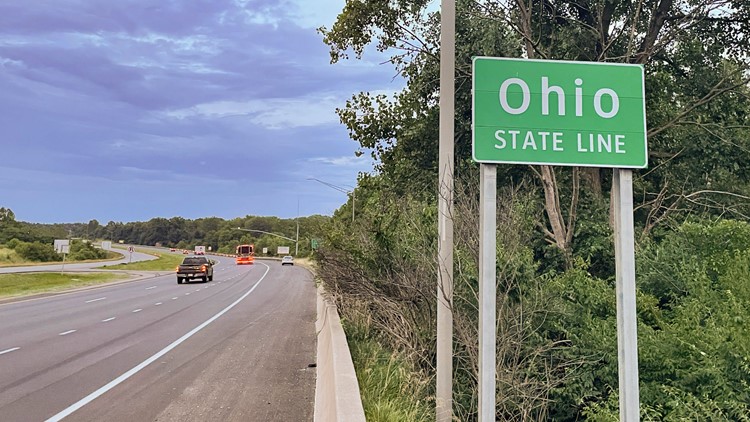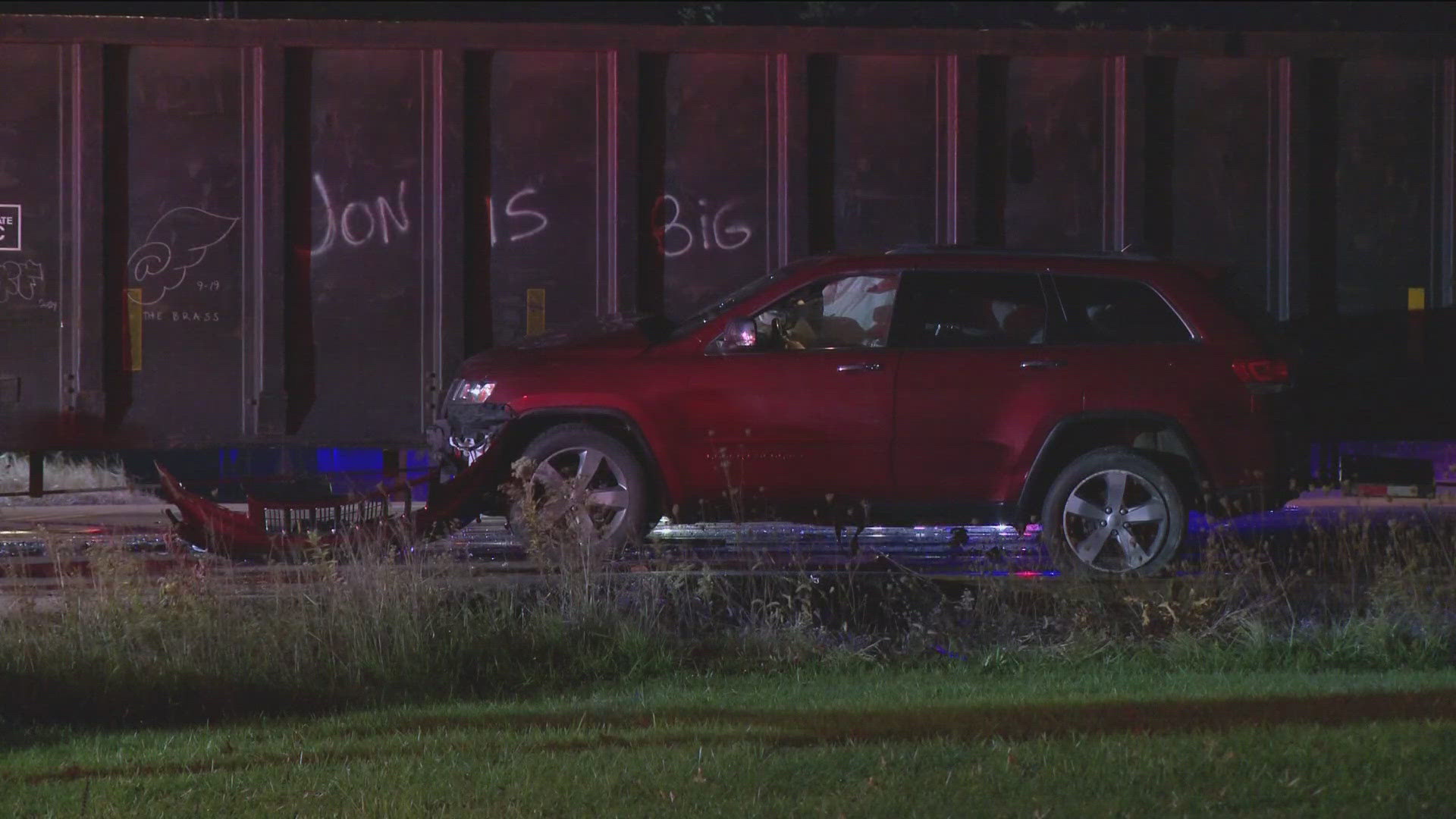COLUMBUS, Ohio — In the dim light of a clinic ultrasound room, Monica Eberhart reclines on an exam table as a nurse moves a probe across her belly. Waves of fetal cardiac activity ripple across the screen.
“The heartbeat,” the nurse says. “About 10 weeks and two days.”
Eberhart exhales. It’s good news. “That means I’m just under,” she says, raising her hands and crossing her fingers.
The 23-year-old mother of three is racing a political clock. When she learned she was pregnant again, she decided abortion was her best choice — even if meant navigating a patchwork of state laws enacted since the Supreme Court overturned Roe v. Wade.
Hours after the ruling in late June, Ohio imposed a ban on abortions once cardiac activity can be detected, at about six weeks of pregnancy. Since then, Women’s Med clinic in Dayton has been referring hundreds of patients like Eberhart to its sister facility of the same name in Indiana, 120 miles away. There, in-clinic abortions are allowed until 13 weeks and six days of pregnancy — for now. Indiana lawmakers recently approved a ban on almost all abortions, after weeks of debate in the Statehouse. The law takes effect Sept. 15.
At just over 10 weeks into her pregnancy, Eberhart will need to travel to Indianapolis for an abortion. It's disruptive, an inconvenience — but she's more than ready. With new state laws and court challenges popping up on what seems like a daily basis, she doesn’t want to wait any longer.
“I have to get it done, I can’t really wait. I’ve put everything on hold just to get this one thing handled,” Eberhart says. “I absolutely cannot afford another baby, whether that be financially or mentally.”
Women’s Med has performed few abortions in Ohio since the state ban was enacted; most women don’t learn they’re pregnant until after six weeks. The Dayton clinic, a two-story building that blends into its leafy suburban surroundings, has been in business for almost 40 years. Recent days have become increasingly chaotic, workers say.
They see desperate patients — a teenager who was raped, women with ectopic pregnancies, families unfamiliar with Ohio law. Some workers have left for more stable jobs. Those who remain say they’re determined to keep helping patients, even when it means sending them out of state.
“We are going to see as many people and do as much for these people as we can until we close down,’’ says Dr. Jeanne Corwin, who works at both clinics. She knows they’re likely to shutter next month. Until then, she focuses on preparing her Ohio patients to travel.
During Eberhart’s visit, she and Corwin sit in her office. States have various requirements on what patients must be told -- procedure details, after-care instructions, birth control methods. But Indiana, Corwin explains, requires her to give what she derides as false information about fetal pain, and to discuss medical cremation. It is, she says, a bureaucratic process aimed at dissuading abortions.
Eberhart listens. Like most women at the clinic, she is undeterred.
The Indiana clinic can squeeze her in the next day, despite the influx of patients. The appointment gives her just enough time to meet Indiana’s requirement for an 18-hour waiting period after the in-person education and counseling session. Anti-abortion advocates hope some women will decide against the procedure in that window, but Eberhart knows what she wants.
A manager for a beauty supply store, she lives paycheck to paycheck, and she struggles with post-partum depression from the birth of her youngest. She relies on her parents to help care for all three kids -- ages 4, 3 and 10 months.
“Love my kids to death, and they’re everything I would ever want in my life,” she says. “But if I, rationally speaking, could choose to do it over … no kids at 18. "Wait till I’m like 35. Wait till I have a whole house, a pension, a 401(k), a savings, three cars. Like, wait till you are financially able and stable.''
Her children are staying with her parents for a few days; Eberhart wants them to know nothing of her plans. That night, at her unusually quiet house, Eberhart plays video games and watches TV. She doesn’t feel scared or worried. Still, she struggles to sleep.
In the morning, the father, a friend who’s been supportive of Eberhart’s decision to seek an abortion, arrives to pick her up.
“I’m finally on my way,” she tells herself. She manages to nap during the 2.5-hour drive, hoping to stave off pregnancy-induced nausea.
They arrive about noon at the Indianapolis clinic — a low-slung, nondescript building in a modest neighborhood. As at the Ohio facility, anti-abortion demonstrators gather here nearly every day, and an armed security guard is posted at the door.
Opponents believe unrestricted abortions disregard human life and argue that strict limits or bans are needed to protect the unborn. For Eberhart, the demonstrators are a nonfactor in her decision. Adoption was never an option for her — she spent time in foster care herself and says she knows the system is overflowing with children. She wants to move forward with the abortion; then, as she'll later say, “no more unplanned babies.”
Eberhart and a steady stream of other patients file into the clinic. They sit, some fidgeting on padded waiting-room chairs, staring at pastel walls and a droning soap opera on the TV. Each feels the urgency brought on by looming legislation.
There’s the nurse who got pregnant when her IUD failed. The 27-year-old is still breastfeeding her 5-month-old and recovering from ovarian-cyst surgery. She and her partner worry that another pregnancy is too dangerous. At 11 weeks pregnant, she, too, traveled from Ohio.
A retail worker in Louisville got a ride from a friend when her appointment was abruptly canceled over a new state ban there. Indiana’s waiting period means she’ll have to make the two-hour drive again, another day. The 27-year-old was on birth control when she got pregnant.
A factory worker from southern Indiana says her strict, Catholic father would disown her over an abortion. She’s certain she’s going to hell. But as a 28-year-old single mom, she knows she can’t raise another child.
A high school honor student got pregnant when her boyfriend’s condom broke. She told her mom, who revealed a secret she’d kept even from her husband — she had two abortions long ago, before marriage, when any notion that Roe v. Wade could be overturned seemed remote.
All these women — who spoke to AP on condition of anonymity, over fears that family and friends would learn of their abortion plans — will see Dr. Katie McHugh. She and the other staff in Indianapolis are performing twice as many abortions as they did before the Supreme Court ruling. In July, 474 patients had abortions there, compared with just over 200 in May. At least half come from other states.
McHugh sees more fear in her patients these days, and she tries to extend extra kindness. “There’s a sense of desperation,” she says. “They feel so lucky that they got in just under the wire.”
Depending on laws in patients’ home states, the clinic offers abortion by procedure or pills, with women taking two prescription medicines days apart. It’s the preferred and most common method to terminate pregnancy in the country, typically for women up to 70 days into pregnancy.
Eberhart is barely past that limit — but even if she qualified, she’d still need to have the more invasive medical procedure to empty her womb. The clinic won’t risk the legal liability of patients using the pills back home, in more restrictive states.
Over an hour after arrival, it’s time for Eberhart’s procedure. The doctor tells her, “I’m sorry you had to come all the way here, but we’re glad we can help.’’
Eberhart lies down on the exam table in a cramped procedure room and places her feet in the stirrups, a paper sheet covering her legs — much like an ordinary gynecological exam.
McHugh talks Eberhart through each step — feeling for the uterus, applying a numbing medication. Eberhart winces as she feels a pinch, then relaxes. She makes a bit of small talk, telling the doctor about her kids.
McHugh inserts a thin, hollow tube. It's attached to larger tubing and a suctioning pump. McHugh uses it to remove the pregnancy.
The procedure is over in five minutes. Eberhart feels little pain. McHugh tells her to take care.
Eberhart moves to a recovery area, rests on a reclining chair and snacks on a small bag of chips.
“I’m generally in good spirts,” she says. “I knew what I signed up for.”
Over the next few days, she has minor cramps, some hormonal moodiness — but no regrets.
Mostly, she feels an overwhelming sense of relief — that she was able to find a clinic to give her the care she wanted, that the fast-closing window for abortion had remained open long enough.
“I just want to do what’s right for my body and my life,” she said.



